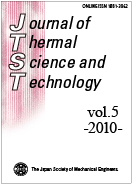Volume 5, Issue 1
Displaying 1-15 of 15 articles from this issue
- |<
- <
- 1
- >
- >|
Papers
-
2010Volume 5Issue 1 Pages 1-10
Published: 2010
Released on J-STAGE: January 22, 2010
Download PDF (272K) -
2010Volume 5Issue 1 Pages 11-23
Published: 2010
Released on J-STAGE: February 12, 2010
Download PDF (336K) -
2010Volume 5Issue 1 Pages 24-35
Published: 2010
Released on J-STAGE: February 23, 2010
Download PDF (6391K) -
2010Volume 5Issue 1 Pages 36-50
Published: 2010
Released on J-STAGE: March 10, 2010
Download PDF (1159K) -
2010Volume 5Issue 1 Pages 51-60
Published: 2010
Released on J-STAGE: April 06, 2010
Download PDF (1168K) -
2010Volume 5Issue 1 Pages 61-74
Published: 2010
Released on J-STAGE: April 12, 2010
Download PDF (969K) -
2010Volume 5Issue 1 Pages 75-86
Published: 2010
Released on J-STAGE: April 12, 2010
Download PDF (1504K) -
2010Volume 5Issue 1 Pages 87-98
Published: 2010
Released on J-STAGE: April 12, 2010
Download PDF (666K) -
2010Volume 5Issue 1 Pages 99-108
Published: 2010
Released on J-STAGE: April 22, 2010
Download PDF (618K) -
2010Volume 5Issue 1 Pages 109-123
Published: 2010
Released on J-STAGE: May 26, 2010
Download PDF (819K) -
2010Volume 5Issue 1 Pages 124-134
Published: 2010
Released on J-STAGE: June 10, 2010
Download PDF (466K) -
2010Volume 5Issue 1 Pages 135-150
Published: 2010
Released on J-STAGE: June 10, 2010
Download PDF (1176K) -
2010Volume 5Issue 1 Pages 151-164
Published: 2010
Released on J-STAGE: June 18, 2010
Download PDF (383K) -
2010Volume 5Issue 1 Pages 165-177
Published: 2010
Released on J-STAGE: June 18, 2010
Download PDF (1520K) -
2010Volume 5Issue 1 Pages 178-188
Published: 2010
Released on J-STAGE: June 18, 2010
Download PDF (2035K)
- |<
- <
- 1
- >
- >|
